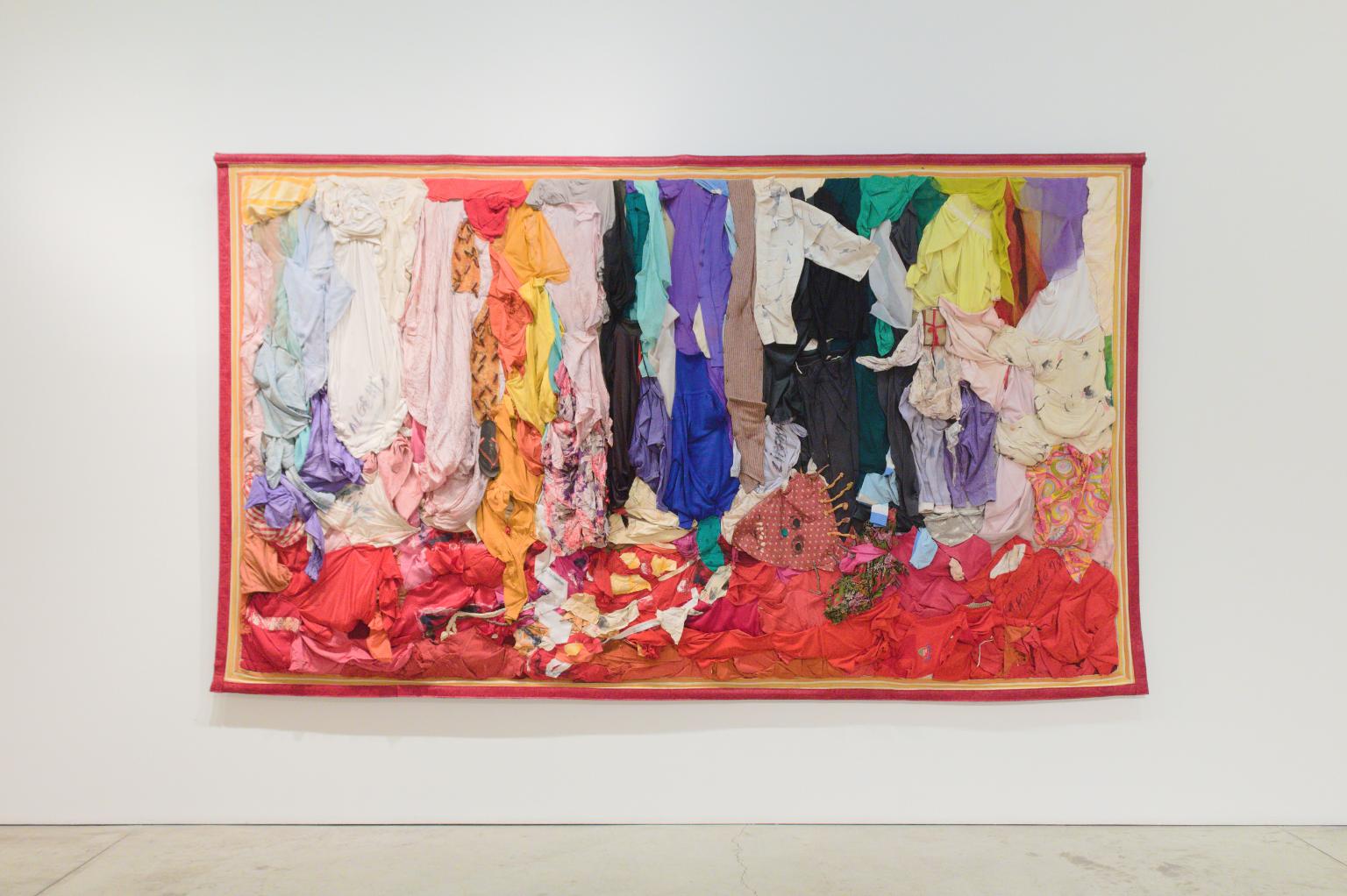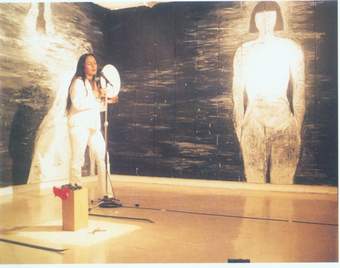12 rooms in Artist and Society
Arahmaiani’s paintings and healing performances lament violence against women in Indonesia.
Burning Country refers to traumatic events witnessed by Arahmaiani in her home country of Indonesia in May 1998. During a period of economic crises, food shortages and unemployment, students began demonstrating against the authoritarian regime of President Suharto.
The killing of four students at a protest triggered three days of arson attacks and acts of racially motivated violence, mostly directed against the Chinese Indonesian population. Around 1,500 people were raped or murdered.
For Arahmaiani, this work is a memorial ‘for the souls of the women who were violated and killed’ during the riots. Arahmaiani made black-and-white paintings to mourn the women whom this horror was inflicted upon. She painted them in the gallery in the weeks leading up to the display opening to the public.
Arahmaiani rose to prominence in the 1980s and 1990s at the forefront of activist and performance art in Southeast Asia. She opened this installation with a mournful performance of protest poetry, drumming and song. By blending artistic disciplines – such as performance, painting, music, poetry and dance – with direct action, she hopes to encourage transcultural and interreligious conversation.
For the artist, her community-based work and performance offer a form of reparation and healing. They are a way to address historical violence by coming to terms with the past.
Art in this room


